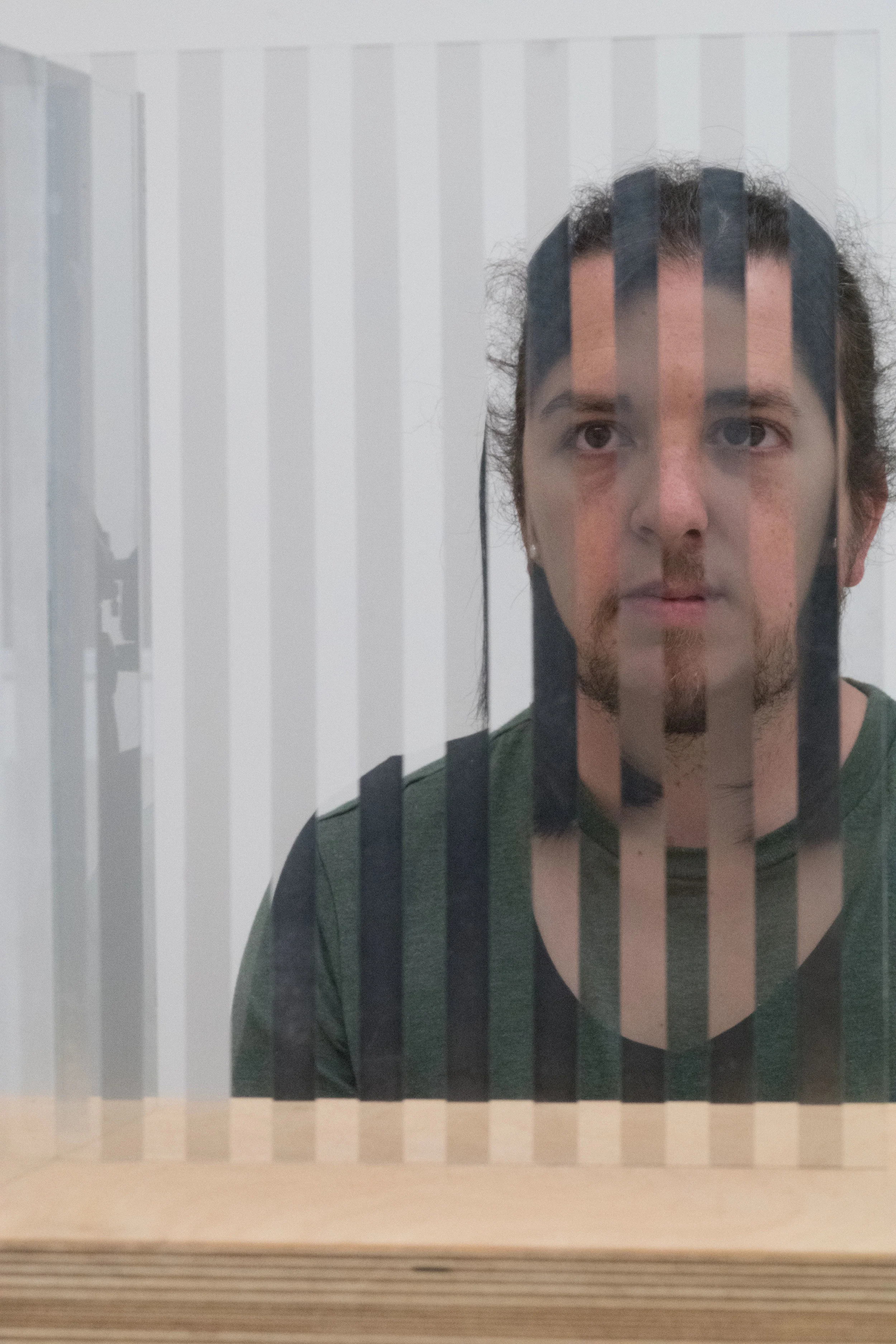Reflexion Proposal
I propose to create an installation tentatively titled Reflexion. The installation will generate an optical illusion that will provide an opportunity for a pair of viewers to simultaneously perceive themselves and one another in the same image. The intent is to create an engaging and perceptually challenging (perhaps even fun?) visual experience that may serve as a catalyst for a deeper identification with another human being.
The proposed work consists of a large, handmade, selectively-silvered mirror placed vertically in the center of a symmetrical space, with chairs arranged to face each side. The mirror is silvered in a striped pattern—every other stripe is clear glass, allowing the chair on the far side to be seen. With careful alignment, the mirror appears to show a continuous image, but in fact juxtaposes images of both sides.
Visitors will be invited to sit in the chairs and view themselves and one another simultaneously. Two specially-prepared mirrors will be layered back-to-back to provide the same visual experience to both participants. The image in the mirror should appear almost continuous until a participant’s presence disrupts the symmetry.
The question thus raised follows: if Space A is analogous to Space B, and Chair A is analogous to Chair B, is Person A also analogous to Person B?
This work is inspired in part by the work of neuroscientist V. S. Ramachandran, whose mirror-box therapy has helped treat amputee patients who feel pain in limbs no longer attached to their bodies. This therapy, illustrated below, uses a reflection of the patient’s working limb to stand in for his or her missing limb, allowing a patient to, for instance, relieve pain by unclenching a cramped phantom hand. The mirror-box provides a therapeutic illusion, using visual means to allow patients to reconnect to a part of themselves they can no longer engage via the usual nerve pathways.
I see Reflexion as related to Ramachandran’s box, providing an analogous form of therapeutic illusion—this time at a social level rather than an individually neurological one. Instead of reconnecting the subject with a missing limb, Reflexion reconnects the subject to a whole other body.
This piece builds upon my previous body of installations that make artworks from that which is usually ignored by pointing out the latent image-ness of what already exists around us. Reflexion draws upon the power of images to evoke an empathic response. It seeks to distill a wide array of social questions and issues to a fundamental unit of empathic interaction: when I look at you, do I see another version of myself?
Maquette images
Since the success of this piece requires that the space on either side of the mirror be as visually identical as possible, the space immediately behind and around the chairs must also correspond symmetrically. The full-scale installation will use custom mirrors made from 4’x8’ sheets of 3/8” architectural glass. The total glass thickness will thus approach an inch, but the reflecting plane itself will appear imperceptibly thin. The chairs will be anchored to the floor to prevent accidental misalignment as participants enter and leave the artwork.
Below are photographs of a proof-of-concept model made with miniature chairs and a 9” x 12” test mirror (taped to an extra piece of glass to hold it upright). Please note these photographs are not digitally manipulated.
Above: Unmanipulated photos taken with a small test mirror, with test subjects of differing genders and racial backgrounds. A better quality mirror is intended for the final installation (more reflective, higher color fidelity).
The shimmering, hypnotic effect that stereo vision contributes to the experience of this phenomenon cannot be conveyed in photographs. The reflection allows a coherent three-dimensional perception of the composite image (similar to a hologram), while the mirror itself takes on an ethereal shimmering quality, simultaneously transparent and silvery. For a better (but alas, still insufficient) sense of this phenomenon, please view the videos below.
Left: Photoshop composite depicting the intended effect at full scale. Note the chair and background appear continuous, while the figures are superimposed.










